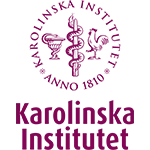Explore the credit course catalogue
7 Results

Do you need to turn data into a publication figure? We offer tools and confidence for the student to independently select a statistical method for research questions in their field. The course is practical and includes implementing a basic statistical analysis in R, the leading statistical programming language in bioinformatics and medical science. Furthermore, we give a brief introduction to visualization in R, with a focus on R/ggplot2. Students can bring data from their own research project, or work on data from the course.

The course content lean on Design thinking ideology and methodology that inform research as well as developmental work and form a practice-based foundation for innovation aimed to meet the needs of societal and scientific environments. As a student, you work individually from your own research perspective, and get helpful insights for future research.
The course apply a problem-oriented teaching and learning style, with a pedagogy that enables students to take active responsibility for individual and also group learning in a multi-disciplinary context.

Progress in medical innovation stands as a catalyst for worldwide economic growth. Whether within pharmaceuticals, medical devices, biotechnology, information technology, or a fusion of these advancements, the potential advantages extend significantly to private businesses and societal well-being. However, due to long development times and rigorous regulations, these innovative concepts require a lot of financing to establish their presence in the market. Consequently, assessing the value of novel medical innovations remains crucial. The primary objective of this course is to empower researchers with the proficient capability to effectively assess the worth of emerging technologies or processes within the medical industry.

The course aim is that the doctoral student develops a theory of science approach by enabling the doctoral student to understand, employ, reflect upon and critically assess concepts and ideas of theories of science as well as their implications for in particular medical scientific practice. A further aim is to enable the doctoral student to understand, reflect upon and critically assess views on and implications of definitions of health and disease.

Dive into the cutting-edge world of nuclear medicine with this comprehensive course that blends theory and hands-on practice. In this one-week course, you will gain invaluable knowledge and skills at the forefront of medical imaging and targeted radiopharmaceutical therapies.
This course offers a unique opportunity to:
- Master the fundamentals of radiation physics and biology
- Explore state-of-the-art diagnostic and therapeutic applications in oncology and neurology
- Gain practical experience handling radiopharmaceuticals in a laboratory setting
- Understand the latest developments in personalised medicine using radioactive tracers
Upon completing the course, you will be allowed to handle radiopharmaceuticals and open radioactive sources at Karolinska Institute and Karolinska University Hospital.

The course will introduce neuropsychological assessment in an aging population, focusing on age-related cognitive changes and their neural correlates. An additional purpose is to increase understanding of cognitive aging and how to differentiate between non-pathological cognitive aging and early signs of pathology. After the course, you will be able to define and describe common neuropsychological concepts and measurement techniques and demonstrate an overall understanding of neuropsychological investigation methodology and cognitive diagnostics in aging. The course will give you an increased understanding of cognitive aging and the complexity of differentiating between “normal” and early-stage pathological aging.

The course is aimed for you who want to get an understanding of the principles of PET, the methodology used for neuroreceptor imaging and quantification, as well as to get an insight in important research ongoing in the field and in the clinical applications of PET.


